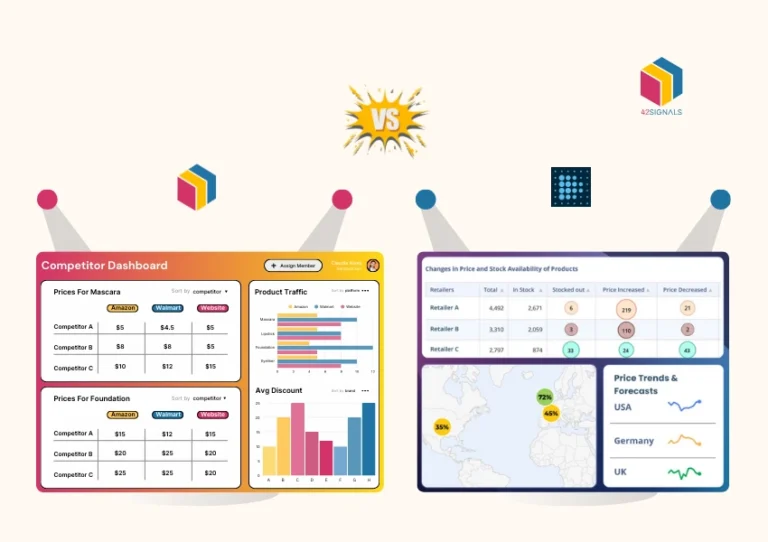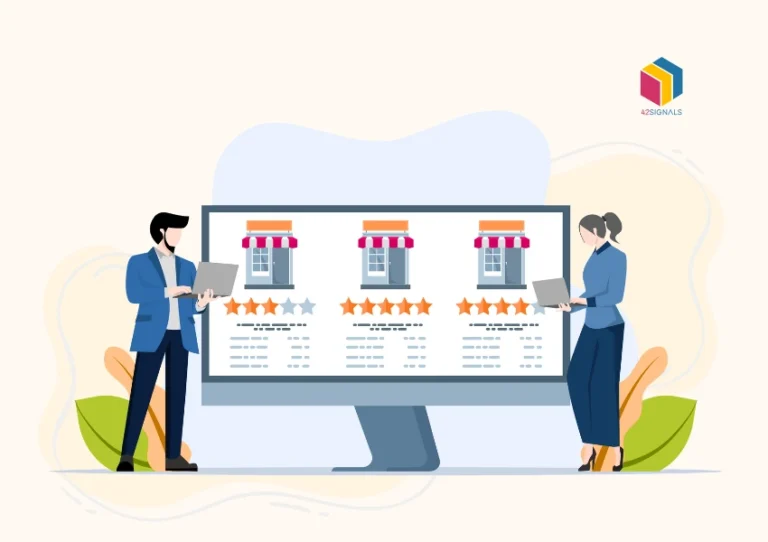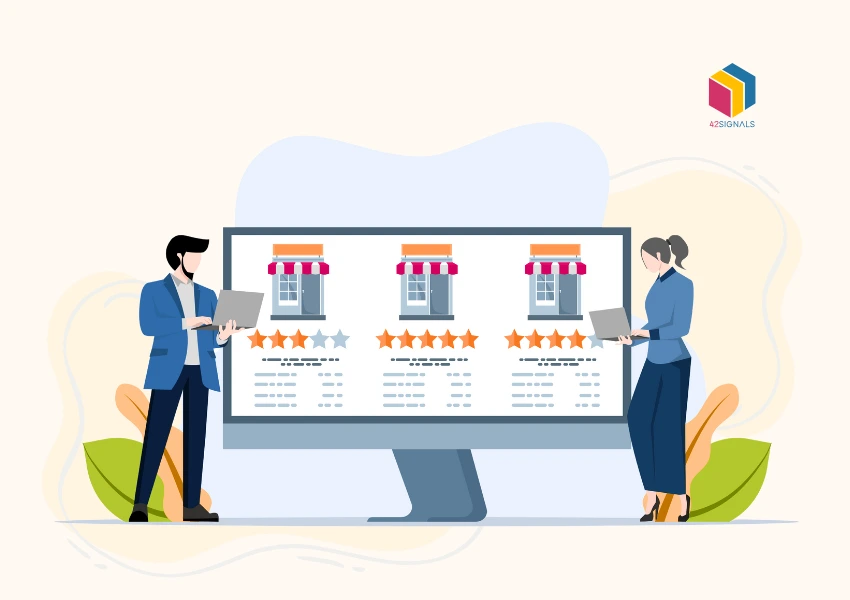Table of Contents
ToggleAmidst the growth of online shopping, competition is becoming stiffer. So, how do you stay in the loop? By being informed about what your competitors are doing. With product competitive analysis, it is possible to keep track of their pricing and performance, as well as their strategies.
In this article, we will look into ways in which product competitive analysis can enable business owners to monitor their competition, modify their prices, and identify opportunities. To make things simpler for you, we will also explore how the Competitor Analysis Dashboard by 42Signals can minimize the amount of work you have to do.
Why Product Competitive Analysis is Crucial in eCommerce?
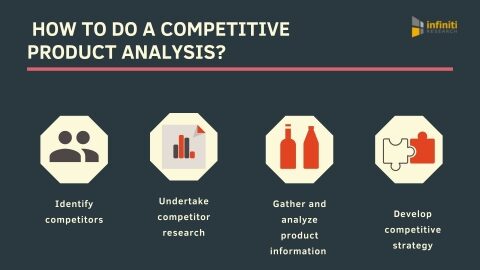
Image Source: BusinessWire
Businesses have shifted to eCommerce platforms, and to succeed, competitiveness is key. It is important to keep track of how your products perform in comparison to those offered by competitors. Product competitive analysis is powerful and can provide insights into a marketplace from which one can gain a lot. Here are some of its benefits:
1. Keeping Tabs On Competitors
If you are interested in the performance of your competition, you can monitor their sales, customer feedback, and social media engagement. Those factors could provide insight into what works for them, and even give you a chance to implement such strategies for your business.
2. Adjust Your Prices Accordingly to Product Competitive Analysis
Consider this: pricing is perhaps one of the most crucial aspects when buying a product over the Internet. Setting prices too high or too low could mean that you miss out on customers. Monitoring your competitor’s pricing helps you know when to revise your prices to ensure that you do not lose sales.
3. Identify Market Gaps
Examining the competition makes it easy for you to identify some of the gaps that your competition may not be filling. It could be that they do not offer certain products or that they do not have products to meet certain customer needs. Identifying such gaps presents a good opportunity for you to be more innovative.
4. Know What’s Happening in the Market
The world of eCommerce is dynamic. What customers want keeps changing, and there are always new trends emerging. If you know what the competition is doing, you are likely to be on top of things. For instance, if most people are marketing sustainable products, then you might want to get in on that action.
How to Leverage Product Competitive Analysis for Smarter Competitive Decisions?
Understanding the competition is essential to any product’s success. This will enable an organization to analyze the activities of its rivals and strategize on how to beat them. Here’s how.
1. Share of Search
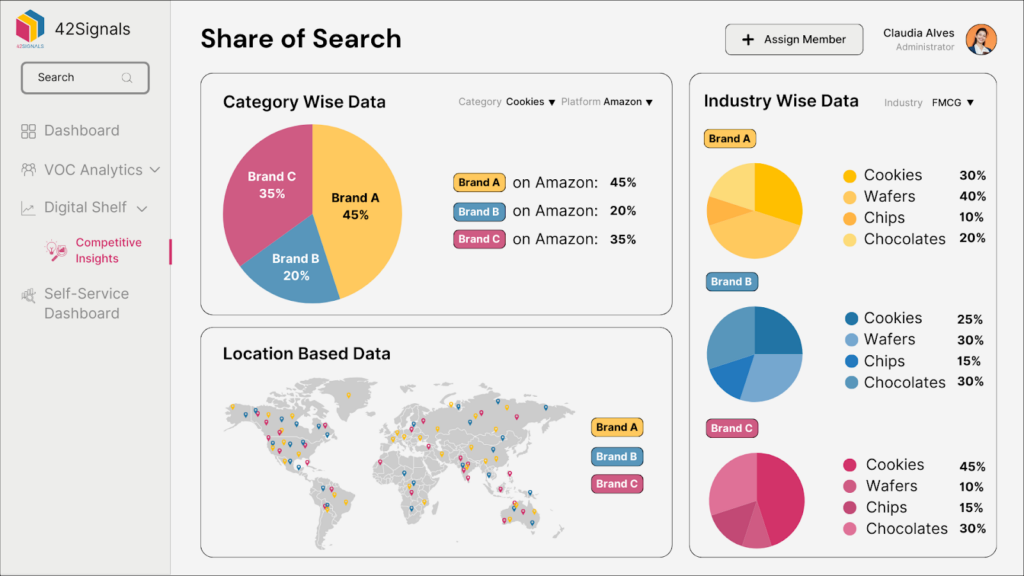
Your products need to be visible to customers. One of the important metrics is known as ‘share of search’, which informs you of the visibility that your product has in comparison to the products of your competitors. If such a figure is less than satisfactory, then it’s time to focus on optimizing your listings and advertisements.
Beyond Basic Metrics
Share of Search (SoS) measures brand visibility relative to rivals. But winning requires strategic aggression:
- Calculation:
(Your Brand Searches / Total Category Searches) × 100
Example: If “yoga mats” gets 10K monthly searches, and your brand has 2K, your SoS = 20%. - Thresholds:
- <15%: Danger zone (prioritize SEO/content blitz)
- 15–30%: Growth zone (target rivals’ weak keywords)
- 30%: Domination zone (defend via branded content)
2. Analyze Product Listings with Product Competitive Analysis
When analyzing your rival’s products listings, pay special attention to the way they represent them. Moreover, has their product title been modified to something appealing? Does their description highlight the important aspects? It is always a possibility that their technique can be used to revise your listings to appeal to your customers.
The 5-Point Listing Autopsy
When dissecting competitor listings, audit:
- Title Triggers: Emotional hooks vs. dry specs
Bad: “Blue Yoga Mat”
Winning: “Eco-Friendly Non-Slip Mat – 40% Thicker for Joint Relief” - Image Psychology: Lifestyle shots > product isolation (70% higher CTR)
- Bullet Alchemy: Benefit-first language (e.g., “Reduces knee pain” vs. “6mm thickness”)
- Review Leverage: Embedding UGC photos in descriptions
- Hidden Differentiators: “Ships in 24h” badges or “Carbon Neutral” icons
3. Keep Track of Inventory
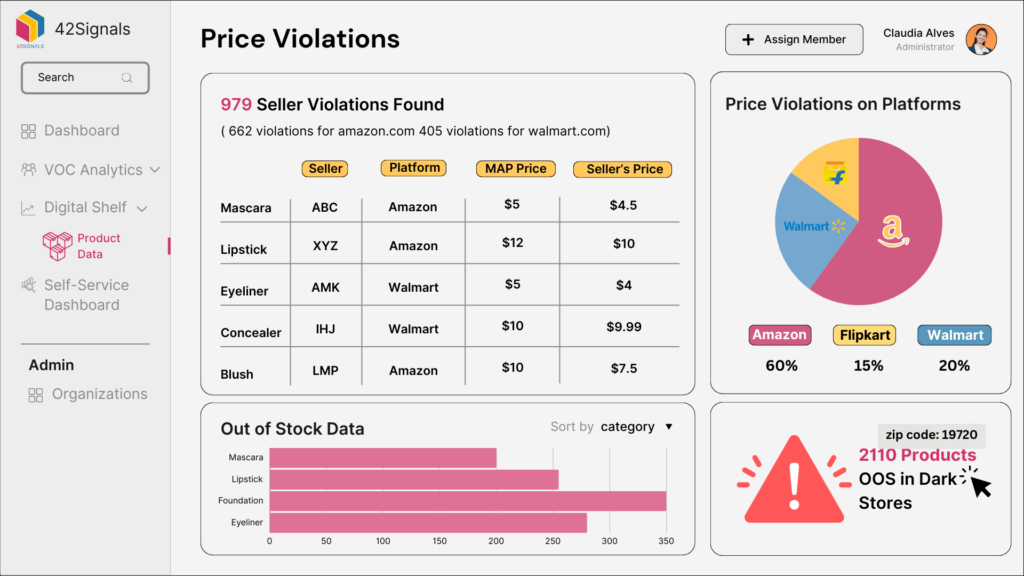
For effective competition, it is important to know what stock your rivals have. If they have low or no inventory, then that’s the perfect opportunity for your product to take some of their market share. Additionally, knowing their stock levels is a smart way to know how much stock of your product you should maintain.
Real-Time Stock Intelligence System
- Trackers:
- Use 42Signals for automated competitor stock alerts.
- Triggers:
- When rival stock ≤15%, deploy:
- Paid Ads: Target their branded keywords (“Competitor X yoga mat out of stock?“)
- Email Campaigns: “While others wait, get yours TODAY” to abandoners.
- When rival stock ≤15%, deploy:
- Predictive Stockholding:
- If competitors chronically stock out in Q4, pre-build 30% extra inventory.
Proven Results:
- Best Buy captured 19% of Sony headphone sales during Amazon Prime Day stockouts.
- Warby Parker uses rivals’ frame discontinuations to push similar styles via retargeting.
Defensive Shields:
- Dark Stock: Reserve 10% inventory for crisis moments (e.g., competitor stockouts).
- FOMO Counters: Display “Only 3 left!” on product pages during high-risk periods.
Unlocking the Power of 42Signals’ Competitor Analysis Dashboard
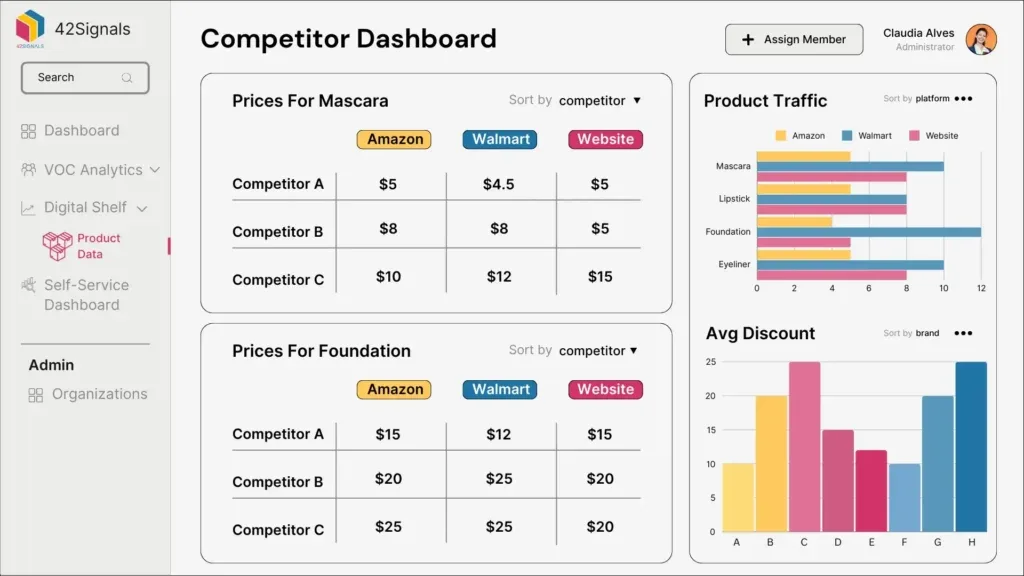
One of the best ways to monitor your competitors is with a competitor analysis dashboard. 42Signals’ Competitor Analysis Dashboard makes it simple to track essential data on your competitors. Here’s how it can help:
1. Real-Time Pricing Updates
You’ll get real-time data on your competitors’ prices, so you can keep your pricing strategy on point and competitive. If they change prices, you’ll know immediately, so you can adjust yours accordingly. The dashboard employs advanced web scraping and machine learning to predict pricing trends, helping you avoid undercutting or overpricing.
For example, if a competitor slashes prices during a flash sale, you’ll know instantly and can respond with dynamic pricing strategies to protect margins or attract deal-seeking customers. This feature is particularly valuable for industries like e-commerce and retail, where even a 2% pricing difference can sway customer loyalty.
2. Custom Alerts with Product Competitive Analysis
Tailor alerts to your business needs:
Stock-out alerts to capitalize on gaps in competitors’ inventory.
Receive alerts via email, SMS, or Slack for rapid team response. For instance, if a rival’s top-selling item goes out of stock, you can instantly promote your alternative and capture their frustrated customers.
Threshold-based notifications (e.g., notify when a competitor’s price drops by 10% or more).
New product launches or discontinuations, including details like SKUs and specifications.
3. Monitor Product Catalogs
You can easily track everything your competitors are selling. This gives you insights into their product strategy and shows you if there’s anything they’re missing that you could offer.
- Track product descriptions, images, and feature updates to reverse-engineer their strategy.
- Identify seasonal trends (e.g., holiday bundles) or market gaps (e.g., missing eco-friendly options).
- Compare historical catalog data to spot long-term shifts, like a competitor pivoting to premium products. This intel helps you refine your inventory, innovate faster, and target underserved niches.
4. Track Market Share
Measure your brand’s visibility against competitors using SEO and paid ad metrics, including keyword rankings, click-through rates, and website traffic. The dashboard also integrates sales data (where available) to show true market share. For example, if your share of search for “wireless headphones” drops while a competitor’s rises, you can investigate their content strategy or ad spend and adjust your campaigns proactively.
How to Use Competitive Analysis to Drive Your Ecommerce Strategy?
Now that we understand the importance of conducting a competitive analysis, let us explore how it can be beneficial for your business:
1. Product Development
Competitive product analysis allows you to look at which of your competitors’ products are being purchased the most and determine what your target audience is seeking. Whether it’s modifying a current product or developing an entirely new one, competitive analysis gives you all the info needed to properly appeal to the clientele.
2. Marketing Plan Development
More importantly, the competition analysis enables you to know which techniques are in use by your competitors. It could be social media marketing, an increase in ads, or discounts. These can be effective if adjusted in such a way as to improve your marketing strategies.
The S.O.S. Framework:
- Steal: Replicate high-ROI tactics (e.g., Gymshark cloned Fabletics’ TikTok duets—engagement ↑ 39%).
- Optimize: Improve underperforming efforts (e.g., competitor’s CTR is 2%? A/B test subject lines to hit 4%).
- Sabotage: Counter their weaknesses (e.g., if rivals lack UGC, flood social with #MyBrand testimonials).
Critical Levers to Benchmark:
- Customer Acquisition Cost (CAC): If competitors spend $20/tiktok conversion, target $15 via nano-influencers.
- Channel Saturation: Competitors ignoring Pinterest? Dominate visual discovery there (e.g., IKEA drives 12% sales via Pinterest).
- Promo Strategy: Track discount cadence (e.g., Nike avoids sitewide sales—focuses on member-exclusive drops).
3. Elevate Customer Service
Finally, if your competitors are providing better delivery services, customer care, or even a loyalty program, then take a page out of their books. Competitive analysis helps you identify areas where you need to up your game to maintain the clientele that you have worked so hard to acquire.
Beyond Copying—Build Anticipatory Systems:
- Delivery Intelligence:
- If Allbirds offers 2-day delivery, partner with Route for real-time tracking + delivery insurance.
- Result: Rothy’s reduced “Where’s my order?” tickets by 61%.
- Loyalty Program Reverse Engineering:
- Competitor points expire in 90 days? Offer permanent points + birthday bonuses (e.g., Sephora Rouge).
- Support Tech Stack:
- Deploy Gorgias if competitors use slow email—enable 24/7 AI chat resolving 80% basic queries instantly.
Turning Analysis into Action: The 90-Day Playbook
- Month 1: Conduct deep-dive audits (products, marketing, CX) using Kompyte or SimilarWeb.
- Month 2: Pilot 3 high-impact initiatives (e.g., launch a competitor-lacking product size + steal their top ad creative + implement chatbot).
- Month 3: Measure share shift via Google Trends brand queries + market share tools (e.g., Statista).
Conclusion
In eCommerce, staying one step ahead of the competition requires constant vigilance of business moves. Product competitive analysis provides key insights into competitor pricing, performance, and trends, allowing for crucial business decisions to be made.
The 42Signals Competitor Analysis Dashboard gives you a complete overview of everything your competitors do on the web, making it easier to change your business approach before your competitors do. Changing your approach from constant “set-and-forget” to adjusting your strategy based on these real-time insights is the key to success in the current competitive eCommerce landscape. Schedule a demo today!
Frequently Asked Questions on Product Competitive Analysis
What is product competitive analysis?
Product competitive analysis is the process of evaluating how your product performs against rivals in the same market. It involves studying competitors’ features, pricing, marketing strategies, customer reviews, and positioning to identify gaps and opportunities. The goal is to understand where your product stands, what makes it unique, and how you can refine it to gain a competitive edge.
What are the 5 steps of a competitive analysis?
The five common steps in conducting a competitive analysis are:
- Identify Competitors – List direct, indirect, and emerging competitors.
- Collect Data – Gather information on their products, pricing, customer base, and online presence.
- Analyze Strengths and Weaknesses – Use frameworks like SWOT (Strengths, Weaknesses, Opportunities, Threats) to spot patterns.
- Compare Market Positioning – Assess how each brand communicates value and how they’re perceived by customers.
- Apply Insights – Translate findings into actionable strategies such as improving product features, adjusting pricing, or refining go-to-market messaging.
What are the 5 competitive analysis?
The term “5 competitive analysis” usually refers to Michael Porter’s Five Forces framework, which examines:
- Industry Rivalry – Intensity of competition among existing players.
- Threat of New Entrants – How easy it is for new competitors to enter the market.
- Bargaining Power of Suppliers – The influence suppliers have over pricing and availability.
- Bargaining Power of Buyers – How much influence customers have on pricing and product choices.
- Threat of Substitutes – The risk of alternative products replacing yours.
This framework gives a holistic view of external pressures affecting product competitiveness.
How to do competitor analysis for a product?
To perform competitor analysis for a product, follow these steps:
- Start with Market Research: Identify top competitors using search engines, marketplaces, and tools like SEMrush, SimilarWeb, or 42Signals.
- Examine Product Features: Compare specifications, design, usability, and unique value propositions.
- Check Pricing Strategies: Understand how competitors price their products and whether they use discounts, bundles, or premium positioning.
- Review Marketing Channels: Study their ad campaigns, SEO rankings, social media presence, and customer engagement.
- Gather Customer Feedback: Read reviews and testimonials to uncover what buyers like or dislike about competitor products.
- Summarize and Act: Create a side-by-side comparison chart and identify opportunities to differentiate your product.

